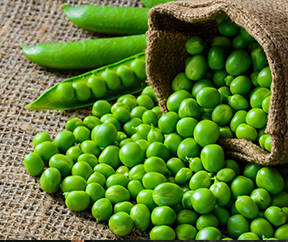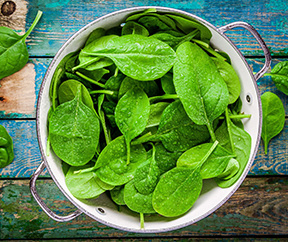Yates Account
Join now
Create a Yates account today!
Sign up to join the Yates Garden Club for monthly e-mails packed with seasonal inspiration, tips for success & exclusive promotions.
Plus if you’re a Garden Club member you can take part in the Yates Growing Community - a blog to share successes, get advice & win prizes in fun challenges along the way!

Forgot password
Enter the email address associated with your account, and we'll email you a new password.

Cool season carrots
Carrots are a great source of vitamins and minerals and contain beta-carotene, which is the orange pigment that helps make carrots orange.
Our bodies convert this beta-carotene into vitamin A, which is a fantastic vitamin for promoting eye health.
Growing carrots can sometimes be challenging, particularly during warm seasons. The seeds are small and not sown very deeply, making them very prone to drying out.
Cooler weather during winter can help keep the soil moist for longer, allowing the tiny seeds to germinate and establish.
Yates Carrot Topweight are perfect for sowing all around New Zealand in June.
Growing Tips:
- Grow carrots in a sunny garden bed that receives at least 6 hours of sunshine a day.
- Carrots need soft and loose soil, otherwise they won’t grow nice and straight. Before sowing, dig around in the soil really well to break up any clumps and hard pieces.
- Sow the seed 6 mm deep and then it’s crucial to keep the area moist until the seeds germinate and begin to establish. Lack of moisture, even for a short time, can mean the end for the germinating seeds. To help keep the soil moist, in addition to regular watering you can cover the area with shade cloth, damp hessian or cardboard. You must check under the cover every day and as soon as the first few seedlings emerge, remove the cover. Seeds may take up to 3 weeks to germinate, so be patient!
- Seedlings will need to be thinned out when they’re 4 weeks old, to give all the plants enough room to grow. Leave around 5 cm between each carrot.
- Side dress carrots with Yates Dynamic Lifter Organic Plant Food every 6 – 8 weeks to provide gentle, organic slow release nutrients.
- Yates Top Weight Carrots will mature in 16 – 20 weeks after sowing, however you can harvest some smaller tender young carrots before then.
Peas please!

Whether you like the crunch of delicious snow peas or the sweet little peas inside sugar snap pea pods, June is the perfect time to get your pea patch started.
Climbing peas like snow and sugar snap peas are the ultimate space saver vegies. They can be grown along a trellis on a fence or up a tepee or tripod, taking up minimal horizontal space.
They’re also great for growing in pots, so you can grow climbing peas on a sunny veranda, courtyard or balcony.
Yates Chinese Snow Peas Climbing produce crisp, sweet pods that can be eaten whole (they’re a terrific in-garden snack), steamed, used fresh in salads or added to stir fries. Kids love snow peas too and a small handful in their school lunchbox is an easy way to add more vegies into their diet.
Yates Peas Sugarsnap Dwarf have juicy, sweet flavour packed pods that can be eaten whole when young or shelled when mature. Shelling peas is a fun activity for kids and the little peas inside are delicious.
Growing Guide:
- Both snow and sugar snap peas should be sown in a spot that receives at least 6 hours of sunshine a day.
- Sow seeds direct where they are to grow, beside a trellis or support, into damp soil that’s been enriched first with some Yates Dynamic Lifter Organic Plant Food.
- Don’t water again for a few days as pea seeds can rot if they’re too wet.
- Seedlings should pop up in around 10 days and you can start harvesting in around 8 – 10 weeks.
- Snow and sugar snap peas are prolific croppers, so you should have lots of tasty peas for several months.
- To encourage a great harvest, as soon as the seedlings are established start feeding each week with Yates Thrive Flower Fruit Soluble Fertiliser, which is boosted with extra potassium which promotes flowering and pod development. Keep picking pods regularly too, which helps prolong the harvest.
The Queen of Spinach

Spinach is laden with fantastic antioxidants and is high in health benefitting carotenoids (though you can’t see them as they’re masked by spinach’s high chlorophyll content). Spinach is also a good source of vitamins, fibre and protein, so Popeye was one smart cartoon character to love this leafy green so much!
Yates Spinach Winter Queen is a tasty, prolific and early maturing spinach variety with large deep green leaves. It can be sown throughout New Zealand in June and it’s as easy as sowing a few seeds in a clump, direct where they are to grow in a sunny spot in the vegie garden. Seeds will take 1 – 3 weeks to germinate (so don’t give up on them too quickly!) and you can be harvesting leaves in as little as 8 – 10 weeks.
The beauty of loose leafy vegies like spinach is that you can harvest individual leaves as you need them.
No vegie patch? Not a problem! Yates Spinach Winter Queen can also be grown in pots. Choose a sunny spot on a patio or balcony and it’s helpful to rotate the pots 180 degrees every week so that as many of the spinach plants are exposed to as much sunlight as possible.
Here are some spinach recipe ideas to inspire you to grow this super healthy vegie:
- Delicious spinach and filo spanakopita
- Spinach and cheese bombs
- Spinach, pumpkin and feta quiche
- Spinach and basil pesto
- Spinach and ricotta pull-apart
Pest watch: keep an eye out for caterpillars on your leafy greens. Caterpillars are voracious chewing pests that can devour entire plants if left to their own devices. Keep caterpillars under control with some regular sprays of ready to use Yates Natures Way Fruit Vegie Gun Ready to Use, ensuring you spray on both sides of the foliage as that’s where caterpillars often hide.
To achieve a bumper harvest of spinach it’s important to keep the soil moist and feed each week with Yates Thrive Vegie Herb Liquid Plant Food, which provides a fast acting boost of nutrients to promote lots of delicious green healthy growth. And harvest leaves regularly. The more often you pick, the fresher new leaves will grow. Enjoy!
















Share
Share this article on social media